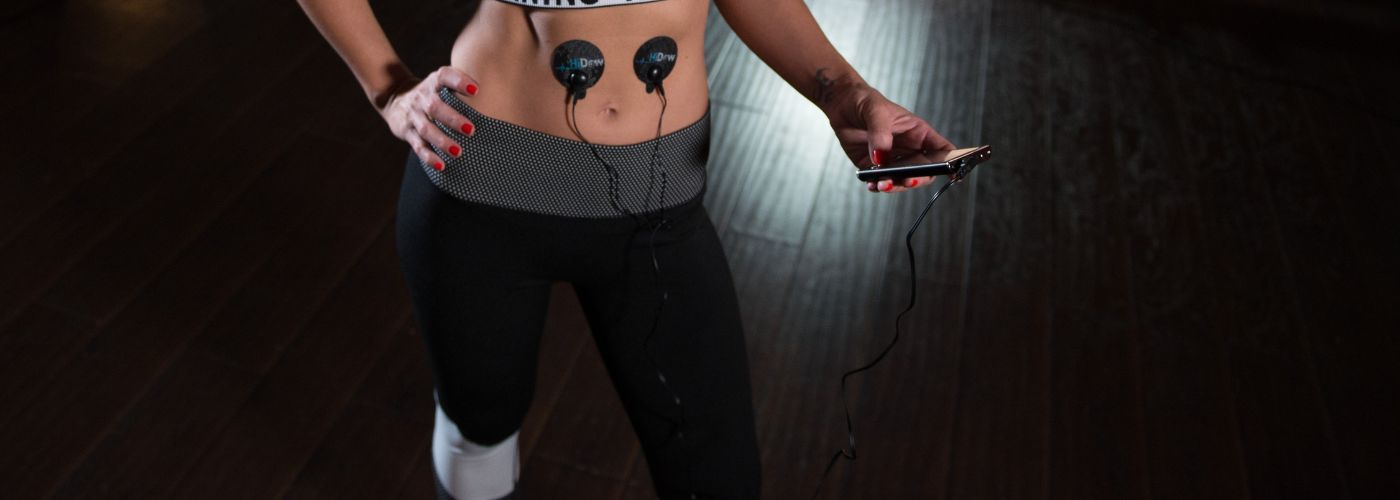In a world where self-care is becoming increasingly paramount, the quest for accessible pain relief has led many to rediscover the power of TENS therapy. We’ll be going over DIY TENS therapy tips to potentially assist your chronic pain management and muscle recovery. TENS therapy units are now more readily available than ever before, so many people are using these devices for their conditions.
Setting Up Your Device For TENS Therapy
Setting up your device for TENS therapy can be a transformative experience when you understand the nuances that elevate its effectiveness. Start by finding the right electrode placement; this is where the magic happens.
Practicing on yourself or even with the guidance of a physical therapist can make a substantial difference in how well TENS alleviates pain. Consider areas around joints, tender spots, or even along muscle pathways to maximize results—each spot might respond differently, creating a unique relief pathway tailored just for you.
Another essential tip is to familiarize yourself with your device’s settings. Many people jump straight into their sessions without exploring variations in pulse width and frequency, which can significantly impact treatment outcomes.
Experimenting within recommended ranges allows you to discover what feels best for your body—whether it’s a soothing pulse that relaxes tight muscles or a more aggressive setting targeting deeper pain points. Plus, don’t forget about timing; shorter sessions may provide instant relief while longer durations could encourage cumulative benefits over time.
Where To Place Electrode Pads On The Body
When using electrode pads, placement is key to maximizing their therapeutic benefits. For muscle stimulation aimed at relieving tension or pain, strategically positioning the pads around the affected area can enhance circulation and promote relaxation.

For instance, placing one pad just above the muscle group and another below it creates a pathway through which electrical impulses flow more effectively—like bridging a gap between two points in an electrical circuit.
Beyond common placements for muscle relief, exploring unconventional areas can yield surprising results. For headaches or migraines, applying pads to the neck and shoulders can alleviate restricted muscles that often contribute to tension headaches.
Alternatively, don’t hesitate to experiment with reflexology principles; placing electrodes on specific acupressure points may produce holistic benefits throughout various body systems.
Optimal Time Sessions For TENS Devices
When using TENS devices for pain relief, timing can significantly influence their effectiveness. Research indicates that the optimal session duration typically ranges from 20 to 30 minutes.
This window allows enough time for the electrical impulses to penetrate deeper tissues, providing maximum analgesic effect without overstimulating the area. Users should experiment within this timeframe to gauge what feels best; some might find shorter intervals more beneficial during acute flare-ups, while longer sessions may be ideal for chronic discomfort.
Moreover, aligning TENS therapy with daily routines can amplify its benefits. For instance, integrating sessions into morning stretches or evening wind-down rituals not only establishes a consistent habit but also promotes relaxation and prepares the body for restful sleep.
Safety Precautions and Best Practices
When embarking on your DIY TENS therapy journey, it’s essential to prioritize safety precautions and best practices. Start by ensuring you use a medically approved TENS unit; cheap imitations can lead to ineffective treatment or even cause harm.
Familiarize yourself with the instruction manual—not just for operational guidelines but also for understanding contraindications specific to your health condition. For example, avoid placing electrodes over the neck or head areas, or on open wounds, as this could lead to discomfort or injury.
Proper electrode placement is crucial for maximizing benefits while minimizing risks. Additionally, start at the lowest intensity setting and gradually work up as you become more accustomed to its effects—this incremental approach can prevent overstimulation and enhance overall efficacy.
When using these devices it’s always recommended to get approval from your primary care doctor first before use. They’ll be able to tell you more about how effective TENS/EMS devices may assist your health.
Maintenance Tips For EMS Devices & Electrode Pads
To ensure the longevity and effectiveness of your EMS devices and electrode pads, regular maintenance is essential. Start by inspecting your electrode pads for signs of wear such as peeling, reduced adhesion, or loss of conductivity.

Even minor imperfections can drastically affect performance; consider switching them out at the first sign of degradation to preserve your workout intensity and results. Additionally, clean the pads with a mild soap solution after each use to remove sweat and skin oils that can compromise their stickiness and lifespan.
Don’t overlook the care required for your EMS device itself. Always store it in a cool, dry place to avoid moisture damage that could impair electrical connections. It’s also helpful to periodically check for firmware updates on the device; manufacturers often release enhancements that can boost functionality or user experience.
Lastly, take note of battery health—frequent charging patterns can reduce overall battery life, so aim for complete discharges occasionally, followed by a full recharge to keep it in optimal condition.
When To Avoid TENS Therapy Sessions
While TENS therapy can be a powerful tool for pain management, there are specific scenarios where it may do more harm than good. For instance, individuals with certain medical conditions—such as those with a pacemaker or other implanted electrical devices—should steer clear of TENS units due to the potential for interference with their devices.
Similarly, active inflammation or specific skin conditions in the area of application can exacerbate discomfort rather than alleviate it.
Moreover, timing plays an essential role in determining whether to engage in TENS therapy. Utilizing these sessions during acute pain episodes might mask underlying issues that need proper diagnosis and treatment.
Additionally, if muscle soreness arises from overexertion or injury, relying solely on TENS could lead to neglecting important recovery practices like rest and rehabilitation exercises. Listening attentively ensures you’re not just temporarily alleviating symptoms but addressing root causes effectively.

Related Stories
Pickleball vs. Tennis: The Science of Recovery
For years, tennis was the stand-in for movement: endurance, coordination, and power all at once....
Oct
5 Ways to Support Bone Strength with HiDow
World Osteoporosis Day (October 20) October 20 is World Osteoporosis Day, and chances are, you’ve...
Oct
FDA-Cleared Is a Flex. Here’s Why.
Pulling Back the Curtain You’ve seen it on boxes, on websites, in ads: FDA-cleared. It...
Sep
This Is Fibro. This Is Larry.
September is Pain Awareness Month. And we’re not here to give you medical definitions or...
Sep
Train Your Relaxation Reflex
How often do you find yourself struggling to switch off after a long day? With...
Aug
Back To School Fitness: Balancing Academics & Athletics
Most student athletes don’t have a motivation problem. They show up. They train hard. They...
Aug